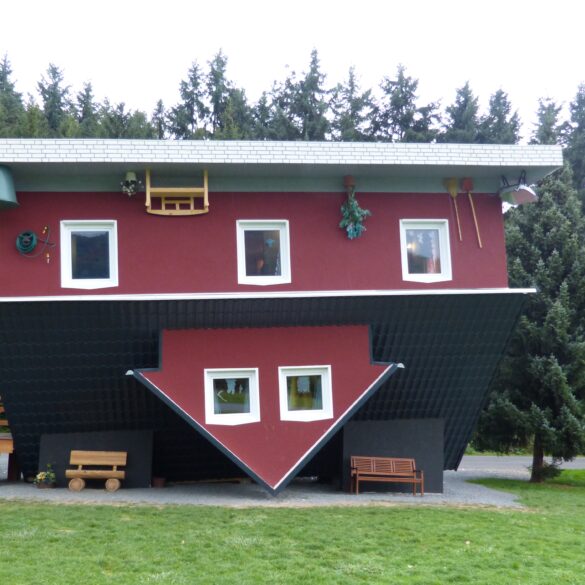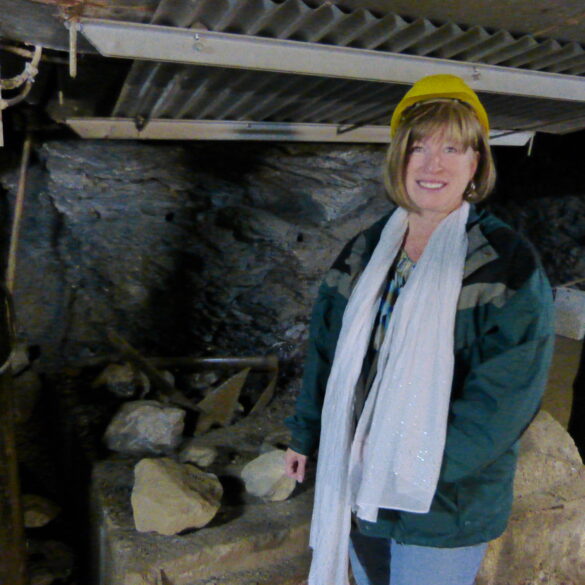If you were living in Europe and were asked where you wanted to go for your birthday weekend, which destination would you choose?
Paris? Vienna, maybe? Or London? Prague?
Well if you were my husband you would choose to go see the Bergen-Belsen concentration camp.
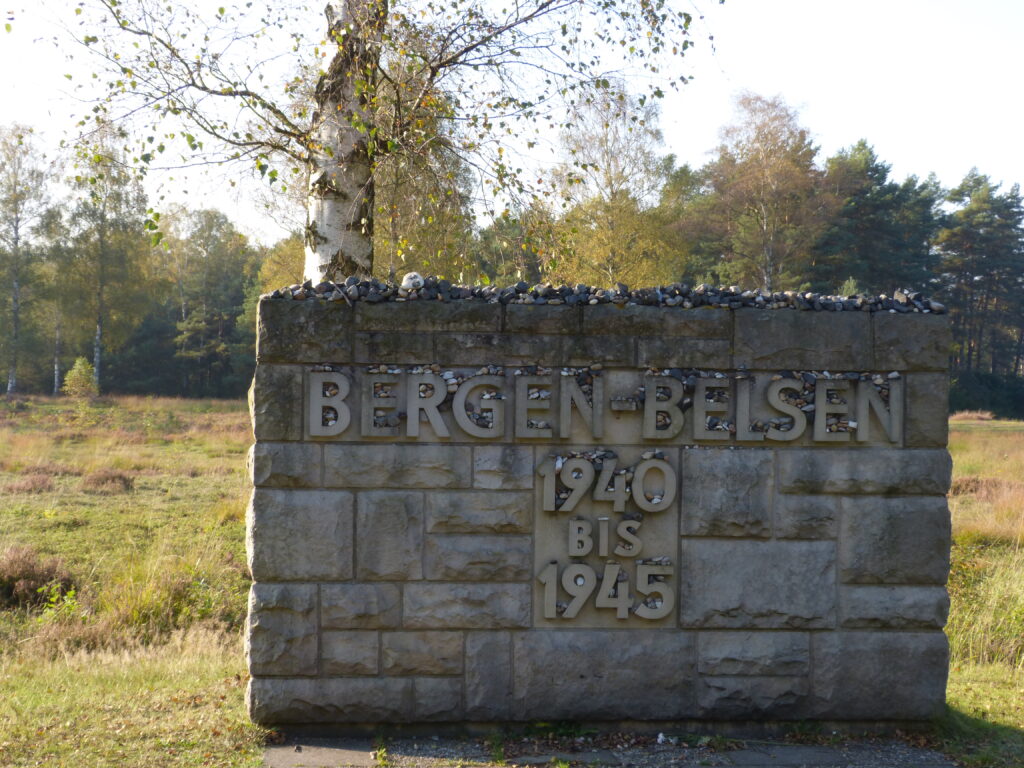
Of course I was interested in seeing it as well; it’s just not something I would have chosen to do on my birthday.
That’s what Sean wanted to do, though, so we left on a Thursday night after work and drove up to Hildesheim.
We had stayed there (LINK) before and knew that it would be a central location for everything we wanted to do over the weekend.
Bergen-Belsen is, sadly, probably most famous for being the place where Anne Frank and her sister Margo died.
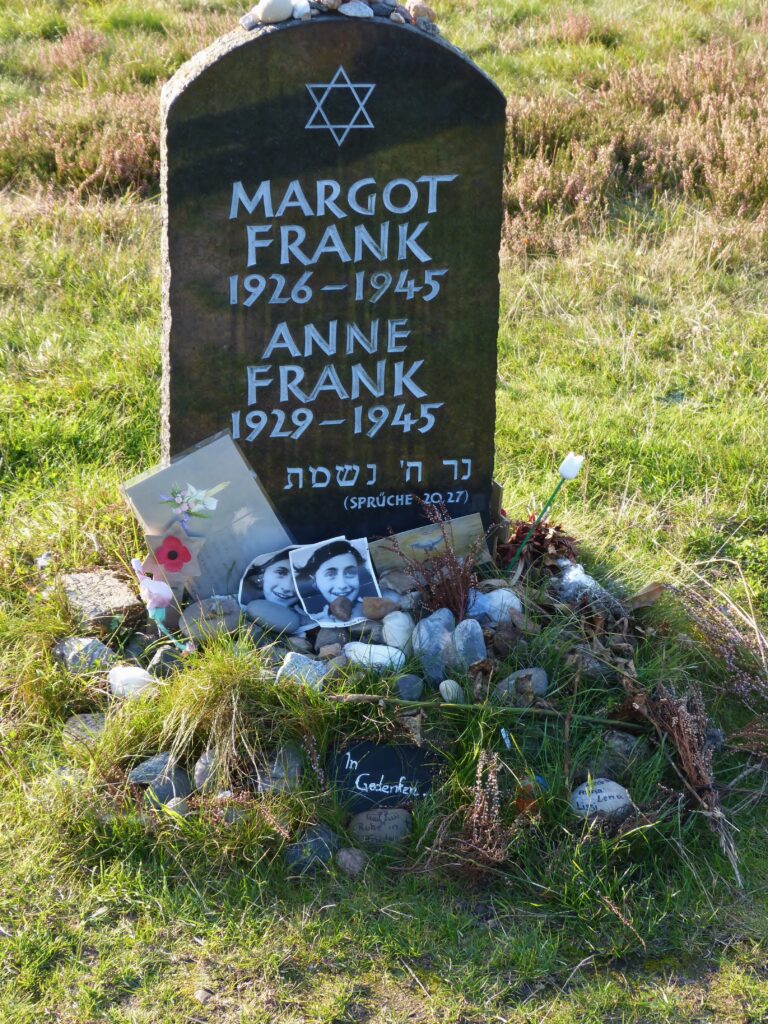
That stone is a memorial marker; it does not indicate the exact location where the sisters died.
The Bergen-Belsen memorial site is located at Anne-Frank-Platz in honor of its most famous victim.
Bergen-Belsen served three different purposes from 1939 through 1950.
First, from 1939 through 1943 it was a POW (prisoner of war) camp. During this time over 20,000 prisoners died, with most of them being from the Soviet Union.
Second, from 1943 through 1945 it also served as a concentration camp. During this time almost 40,000 men, women and children died.
And finally, after the camp was liberated by the British on April 15, 1945 it served as a DP (displaced persons) camp for about 12,000 people over a 5-year period. Almost 14,000 more people died during the first few months after liberation so they are also considered to victims of the concentration camp..
The DP camp was actually a site close to the concentration camp but also used the name Bergen-Belsen. It was the largest Jewish DP camp in Germany.
There were no gas chambers at Bergen-Belsen. People died from illnesses and diseases (mainly typhus), malnutrition, exposure to the elements, exhaustion, and maltreatment including neglect.
Just before liberation the camp became severely overcrowded, which contributed to typhus being spread so easily. In July 1944 there were just over 7,000 prisoners at the camp; less than a year later the British found about 60,000 emaciated prisoners on the day of liberation. They had been without food or water for several days.
They also found about 10,000 unburied bodies that ended up in mass graves.
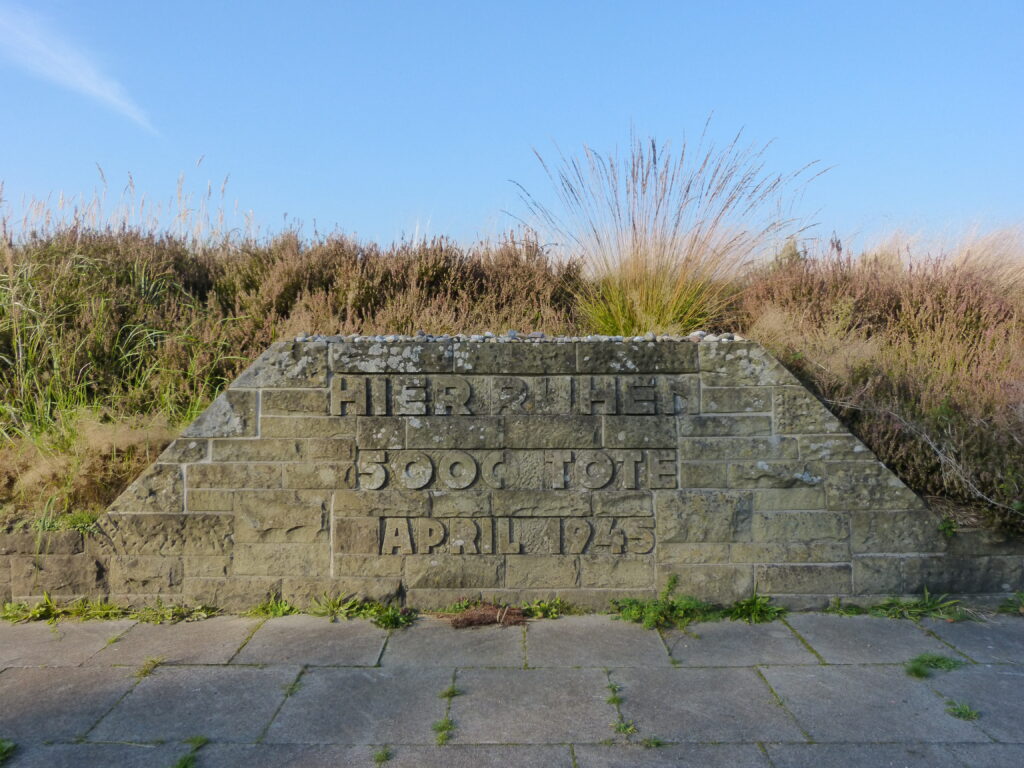
The writing on that grave indicates that it contains 5,000 bodies. There are 13 mass graves at the site today. Some contain 500 bodies and others contain 1,000 bodies. It stuns you into silence to see them as you’re walking around the site.
Of over 70,000 people who died at Bergen-Belsen, only 10,000 of them are known by name.
Initially the British made the camp’s SS staff dig the graves and carry the bodies to them. They then realized that would take far too long and eventually resorted to using bulldozers to get the bodies into the graves. As it was it took a month to get all the bodies buried.
There is a documentation center at Bergen-Belsen that opened in 2007. The permanent exhibit there contains videos, photographs and documents as well as personal effects of victims.
There is an enclosed room called the film tower at the documentation center where you can see footage of the liberation and the days following. I have to say that watching the Nazis being forced to dig the graves and seeing them having to physically move the victims to the graves almost makes you sort of glad that they were the ones finally being forced to labor. But then you see the footage of the bodies being bulldozed into the graves and you realize that nothing was bad enough for those responsible for such horrors. Unfortunately very few of those associated with running Bergen-Belsen were ever tried, and of those who were even fewer were found guilty or sentenced.
Most of the buildings at Bergen-Belsen were burned to the ground by the British upon liberation. This was done to prevent the further spread of typhus as well as the lice that spread the disease.
As a result, there are no original buildings still standing at Bergen-Belsen today.

What you see there is mainly what you see while walking around – trees, grass and heather.
You can the foundations of some of the buildings, and these all have informational posts near them to explain what they were.
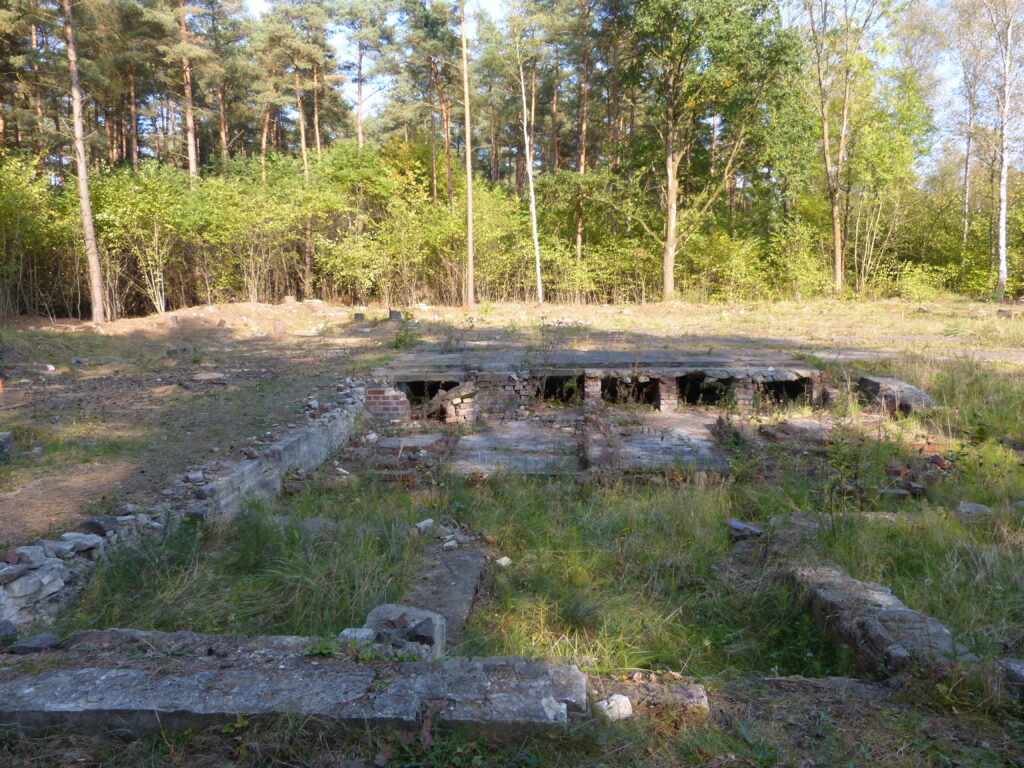
That is the foundation of what was the disinfection building. Arriving prisoners were bathed and deloused but it did little good because as you just read, most of the prisoners died from typhus spread by lice.
There are a few memorials at Bergen-Belsen today.
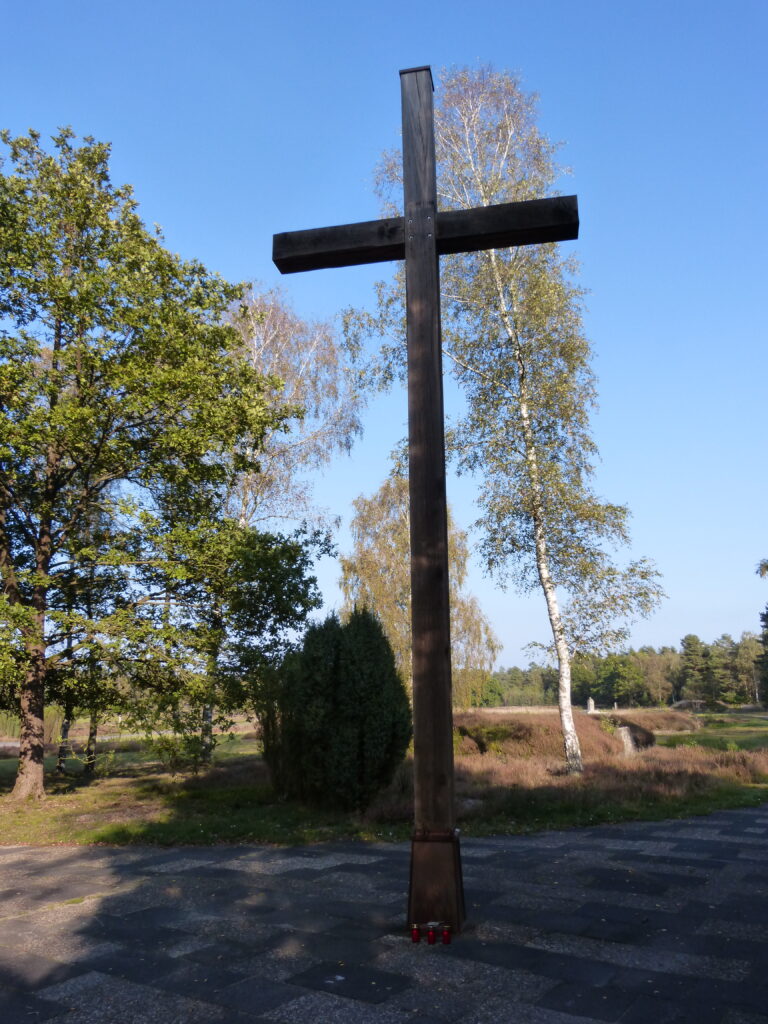
On April 16, 1945 – the day after liberation – a Birchwood cross was erected at that site by survivors who conducted a service to memorialize the victims of Bergen-Belsen.
In November 1945, Polish survivors who were living at the DP camp erected another wooden cross at the same site. The cross has been replaced several times and each one has been the same shape and size.
There is also an obelisk and memorial walls at the site of the former camp.
The obelisk was under wraps and scaffolding when we were there, but you could still see the inscription wall that was erected in 1954.
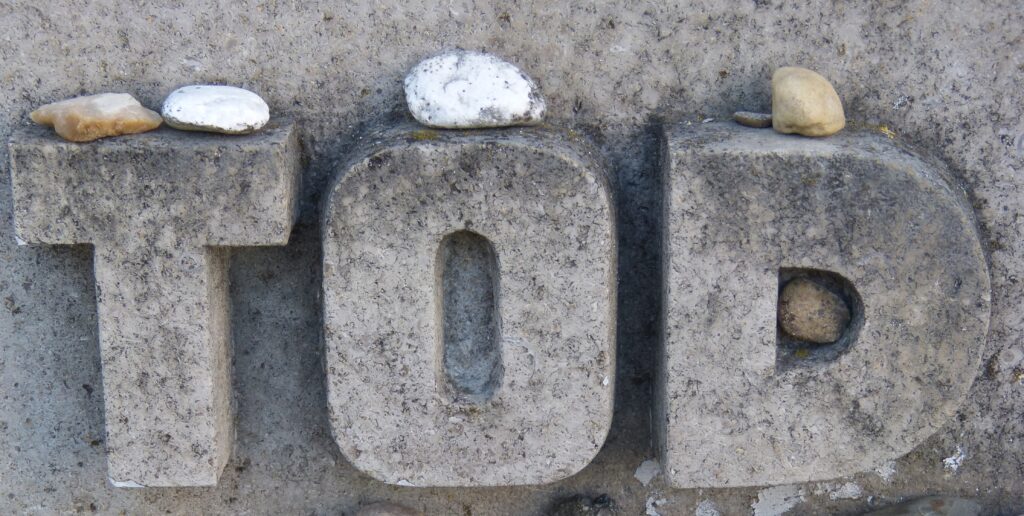
The word “tod” in German means “death”. You can see that there are rocks placed around the letters as was the case with other words on the wall. It is a Jewish custom to place stones on graves.
Bergen-Belsen has only 15 individual graves. I’m guessing because the victims died throughout the camp and don’t have their own gravesites, this is the reason we also saw the stones placed throughout the camp. We even saw them on top of the informational posts mentioned earlier.
One of the individual graves is shown here.
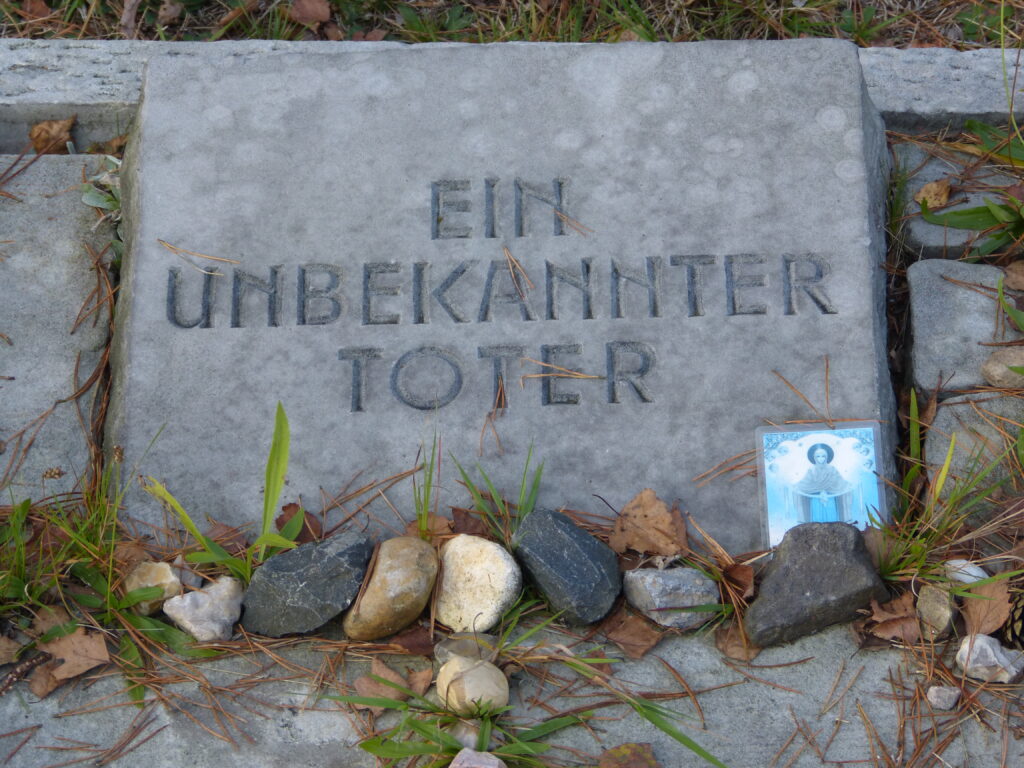
The inscription is “An unknown dead”. (confirm)
Other mass graves of sort are marked by these stones in the ground.
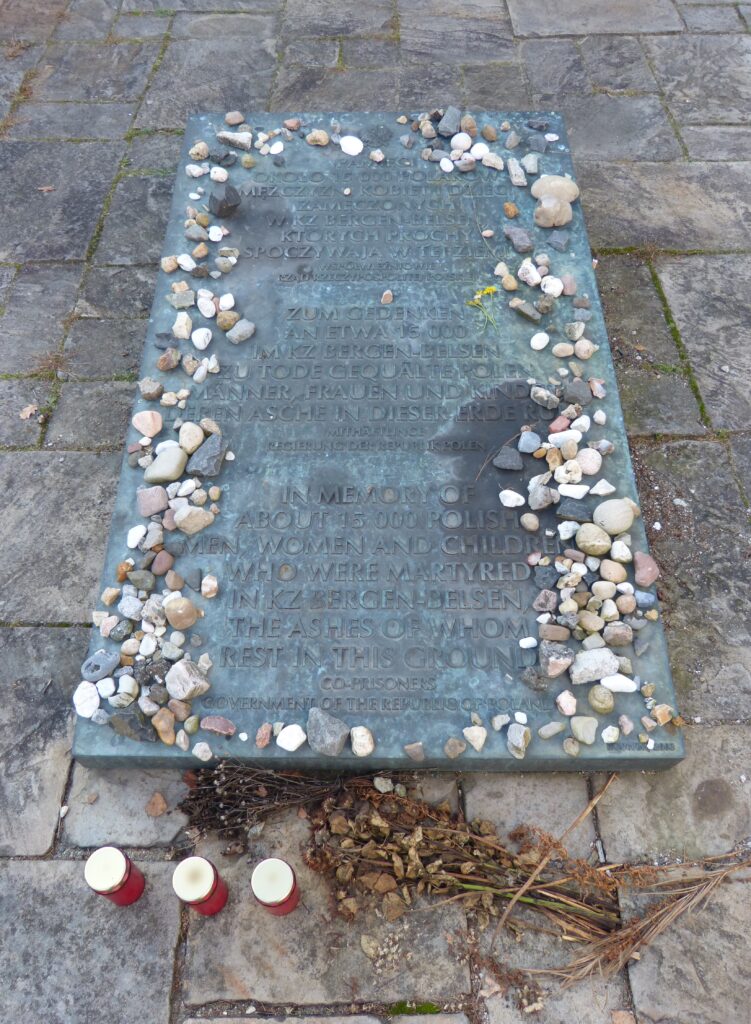
That one says “In memory of about 15,000 Polish men, women and children who were martyred in KZ Bergen-Belsen, the ashes of whom rest in this ground.”
Other stones near that one commemorated victims from the Netherlands and Turkey, as well as groups of victims including Jews, homosexuals, and Roma and Sinta gypsies.
This memorial is in a building called the House of Silence.
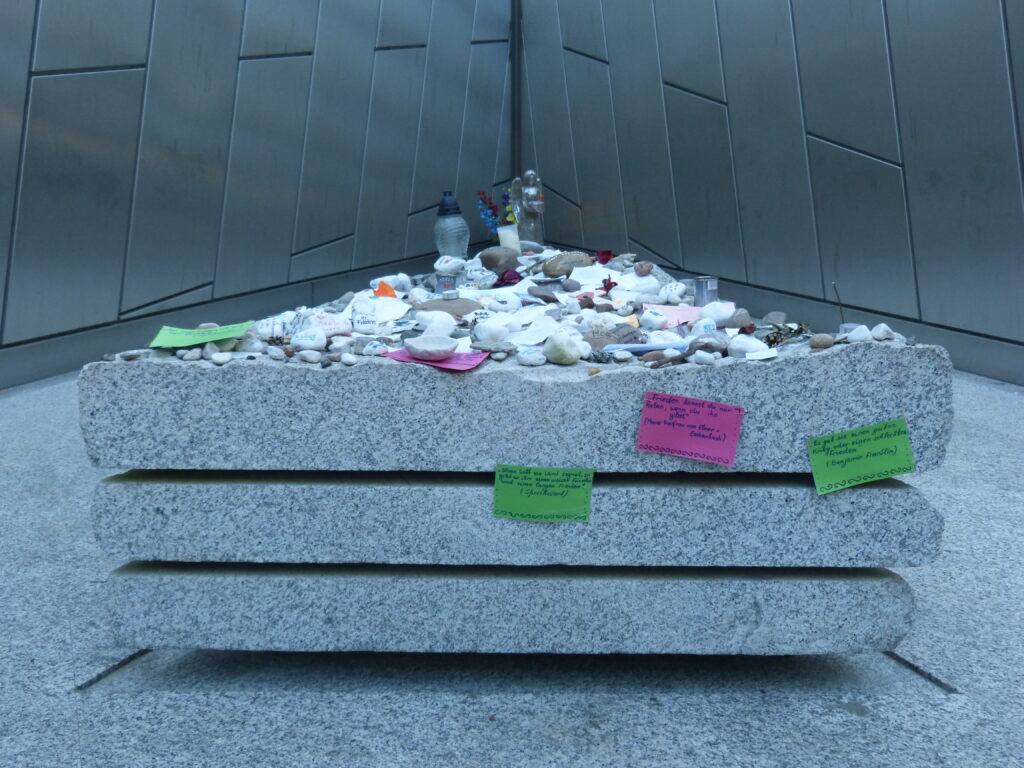
You can see the stones on top of it and there were all kinds of little notes and mementos that people had left in all different languages.
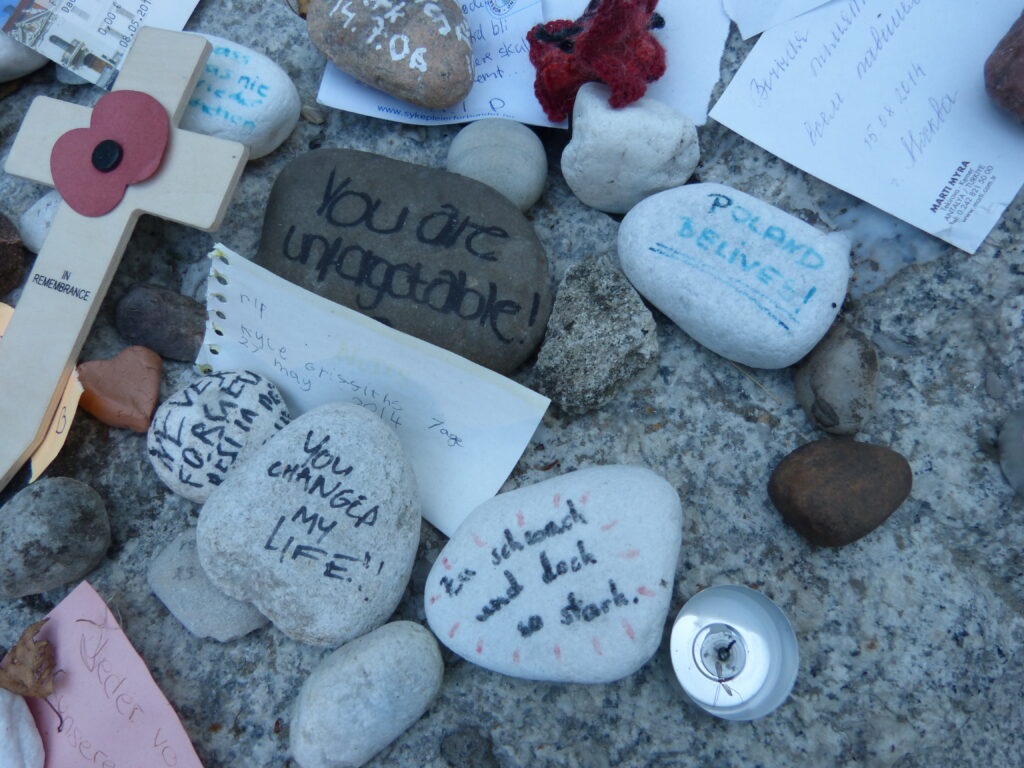
The Israeli memorial is seen here.
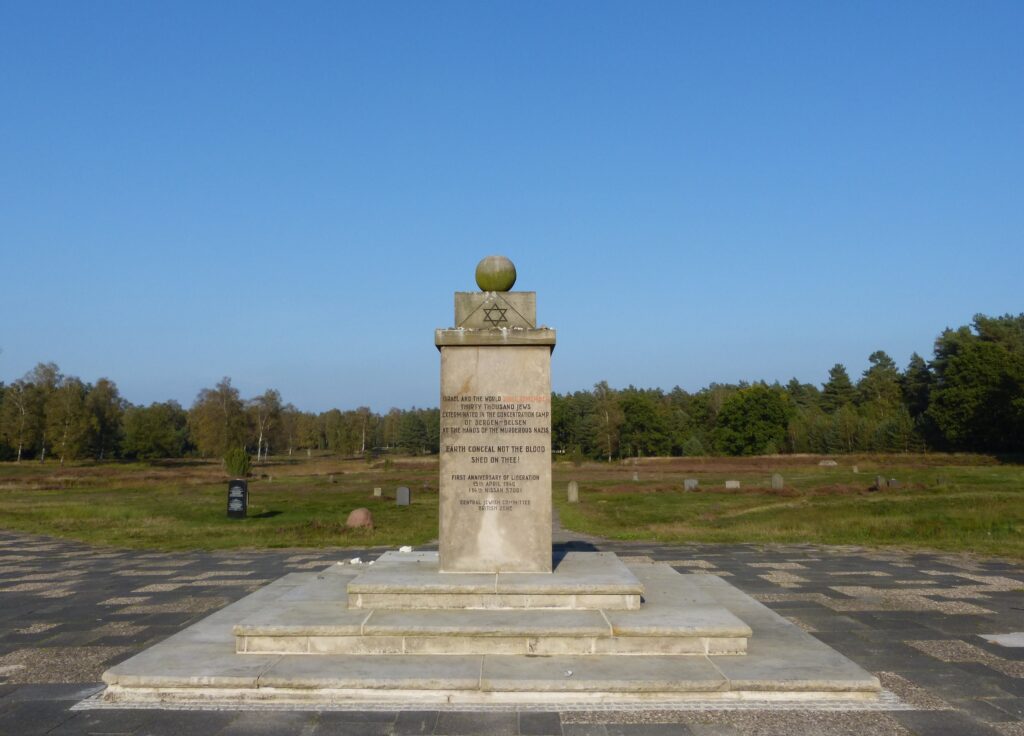
It says, in English on that side “Israel and the world shall remember thirty thousand Jews exterminated in the concentration camp of Bergen-Belsen at the hands of the murderous Nazis. Earth conceal not the blood shed on thee!” The memorial was erected on the first anniversary of the liberation of the camp.
I mentioned earlier that the documentation center has videos and photographs. There are numerous video terminals and you could spend an entire day just watching those.
There are video interviews of both survivors and witnesses, including witnesses who were children in the town at the time the camp was open. It was heartbreaking to see old men break down crying talking about how callous they were as children observing starving prisoners fighting over an apple core.
You can also see footage of the British liberators, some of whom were physically in a state of shock after what they found.
Of course the interviews with survivors were even more heartbreaking. They described being taken from their homes, the journey to the camp (and sometimes several camps) and the living conditions in the camp. I saw several survivors say they couldn’t even react when the camp was liberated. They didn’t care if they lived or died at that point and it didn’t seem real to them that it was over.
Additionally, there is a huge reference library at the documentation center for those interested in doing research.
Oddly, there is also a cafeteria on-site. I mean I guess some people might want to eat there if they spend a full day there, but it disturbed me for a couple of reasons.
One is that as you read, many victims died of starvation. The documentation center described how well the guards ate while right in front of them people were starving to death. I just couldn’t bring myself to eat at a cafeteria on the grounds thinking about that.
The other is that leaving the documentation center you can smell food frying. The smell was actually kind of sickening after seeing the videos of emaciated bodies being bulldozed into mass graves.
Obviously other people aren’t bothered by it so if you go to Bergen-Belsen and are hungry or thirsty, you can get refreshments there.
Admission is free and the grounds are open every day. However, the documentation center is closed between approximately December 15th and January 15th every year. Check their website https://bergen-belsen.stiftung-ng.de/en/ before you go.

